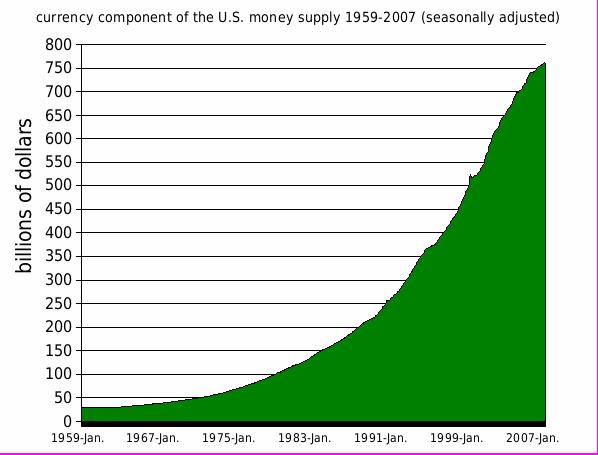According to press reports, the Obama administration
plans to put forward a budget on Feb. 1 containing significant deficit reduction measures. Some liberal economists are warning
that it is grossly premature to implement deficit reduction. Indeed, they believe
that additional fiscal stimulus is necessary to prevent a double-dip recession.
They argue that there is a danger we will make the same mistake that Franklin Roosevelt made in 1937, which crippled the economy's
recovery.
To evaluate the relevancy of 1937 to current
economic and fiscal conditions we first need to review a little history of the Great Depression. First of all, it's important
to remember that what we call the Great Depression was not a continuous downturn; it was really two back-to-back recessions.
According to the National Bureau of Economic Research, the first ran from August 1929 to March 1933 and the second from May 1937 to June 1938.
According to current Commerce Department data, real gross domestic product fell sharply in 1930, 1931 and 1932, and modestly in 1933. But GDP rebounded strongly in 1934,
growing 10.9% that year, 8.9% in 1935, 13% in 1936 and 5.1% in 1937. But in 1938, real GDP fell 3.4%.
For many years, economists thought this "secondary
recession" was inherent in the nature of the business cycle. Today, however, economists generally believe that the only thing
that caused the 1937-38 downturn was disastrously bad government policy.
Although right-wingers like to portray FDR
as a giddy big spender whose profligate ways made the depression worse, the truth is that he was by nature quite conservative,
fiscally. Indeed, when running against Herbert Hoover in 1932 Roosevelt was unsparing in his criticism of Hoover's spending
and deficits. As he put it in an Oct. 19, 1932 speech:
"I regard reduction in federal spending as
one of the most important issues of this campaign. In my opinion it is the most direct and effective contribution that government
can make to business. In accordance with this fundamental policy it is equally necessary to eliminate from federal budget-making
during this emergency all new items except such as relate to direct relief of unemployment."
Roosevelt vowed that every member of his cabinet
would be required to support the economic plank of the Democratic Party's 1932 platform, which said, "We advocate an immediate and drastic reduction of governmental expenditures by abolishing useless commissions
and offices, consolidating departments and bureaus, and eliminating extravagance to accomplish a saving of not less than 25%
in the cost of the federal government."
Treasury Secretary Henry Morgenthau, in particular,
was always disturbed by the deficits. Rather than promote recovery, as most economists believed, he thought that they retarded
it by sapping business confidence. As historian John Morton Blum explains, Morgenthau "was sure that private investors would
not risk their capital when economic conditions were uncertain. He was sure that federal deficits created uncertainty by causing
fears of immediate inflation and future taxation."
While it is true that spending and deficits
rose sharply once Roosevelt took office, the fact is that they never rose sufficiently to offset the fall in private spending
that was at the heart of the Great Depression. This was proven to the satisfaction of most economists in a
1956 article by economist E. Carey Brown, "Fiscal Policy in the Thirties:
A Reappraisal." According to my calculations, the deficits of the 1930s should have been at least five times larger than they were.
[This again is neoliberal spin. A look at the massive infusion of jobs
and putting funds into the hands of the unemployed, and protecting unions, so that workers would have higher wages and thus
more money to stimulate the economy, these made all the difference. Read Wikipedia on the massive response instituted during Roosevelt’s administration. Roosevelt’s
Keynesian economic response is what the neoliberals rewrite.—jk]
In early 1937, Roosevelt was preparing his
budget for the next fiscal year, which began on July 1 in those days. Strong growth in the economy and tax increases over
the previous three years, especially the institution of a new payroll tax for Social Security, had caused tax receipts to
almost double from 2.8% of GDP in 1932 to 5% in 1936. Projections showed that budget balance was within reach with only a
modest reduction of spending.
Roosevelt was also concerned about the reemergence
of inflation. After falling 24% between 1929 and 1933, the Consumer Price Index rose by a total of 7% over the next three
years and signs pointed to even higher prices in 1937. Indeed, the CPI rose 3.6% that year.
Rather than viewing this as a sign of progress,
which had caused the stock market to almost double between 1935 and 1936, Roosevelt and the inflation hawks of the day were
determined to pop what they viewed as a stock market bubble and nip inflation in the bud. Balancing the budget was an important
step in this regard, but so was Federal Reserve policy, which tightened
sharply through higher reserve requirements for banks. Between August 1936 and May 1937 reserve requirements doubled.
During 1937, Roosevelt pressed ahead with
fiscal tightening despite the obvious downturn in economic activity. The budget deficit fell from 5.5% of GDP in 1936 to 2.5%
in 1937 and the budget was virtually balanced in fiscal year 1938, with a deficit of just $89 million.
The result was a huge economic setback, with
GDP falling and unemployment rising. For this reason, Obama's economic advisers have been warning for some time that stimulus
must be continued until full employment has returned. As Council of Economic Advisers chair Christina Romer wrote in The
Economist last June:
"The 1937 episode provides a cautionary tale.
The urge to declare victory and get back to normal policy after an economic crisis is strong. That urge needs to be resisted
until the economy is again approaching full employment."
More recently, economist Paul Krugman warned that the Fed's talk of an early "exit
strategy" from easy money sounds suspiciously like that which led it to tighten prematurely in 1936. He believes
that the good economic news of recent months does not yet constitute proof that a
sustainable recovery is underway and that the danger of a relapse this year is strong as stimulus spending
wanes.
Nevertheless, the pressure to at least begin
the process of normalization is overwhelming. The Fed has talked openly about new procedures to soak up
the bank reserves it has created even as those reserves remain largely idle and unlent. And even Democrats and organizations
affiliated with them are urging Obama to get the budget on a sustainable path as soon as possible. John Podesta and Michael
Ettlinger of the liberal Center for American Progress recently argued that the primary budget (spending less interest on the debt) should be balanced
as soon as 2014, with full balance by 2020.
I'm not terribly worried that Congress will
reduce the deficit too quickly; too much of the budget is on automatic pilot or effectively off-limits. Entitlement programs
like Medicare will continue to grow for years to come and there is no way that defense spending can be reined in as long as
we continue to fight two wars in Iraq and Afghanistan, not to mention the likelihood of new domestic security spending in
the wake of an aborted terrorist attack on Christmas day. And it's far more likely that Congress will appropriate new stimulus
measures than cut back on those already enacted.
Moreover, the possibility of a tax increase
at this point is very remote indeed. Republicans will fight any such an effort even more intensely than they fought health
reform, and it's hard to see any Democrats leading the fight for higher taxes with the party already
looking at electoral losses in November. The administration is even backpedaling on plans to allow some of
the Bush tax cuts to expire this year. Yet there is no plausible way of significantly reducing deficits in the near term without
higher revenues.
For these reasons, I don't see any possibility
of fiscal tightening beyond that which will occur naturally as economic growth automatically reduces spending a bit, and causes
revenues to rise as corporate profits revive. I think there is a greater danger of
the Fed tightening too much, too soon or that Congress may go overboard with new financial regulations,
but hopefully those dangers can be avoided.
One way to achieve fiscal tightening without
endangering the recovery would be to enact entitlement reforms now that won't take effect for some years. Anything meaningful,
such as raising the normal retirement age, will have to be phased in over many years anyway. Since entitlements have to be
reformed at some point, doing so now would demonstrate resolve to get the budget under control while avoiding near-term fiscal
tightening that might be premature.
Bruce Bartlett is a former Treasury
Department economist and the author of Reaganomics: Supply-Side Economics in Actionand Impostor: How George W. Bush Bankrupted America and Betrayed the Reagan Legacy. His most recent book is The New American Economy: The Failure of Reaganomics and a New Way Forward. He writes a weekly column for Forbes.
^^^^^^^^^^^^^^^^^^^^^^^^^^^^^^^^^^^^^^^^^^^^^^^^^^^^
http://economix.blogs.nytimes.com/2011/07/12/are-we-about-to-repeat-the-mistakes-of-1937/
Are We About to Repeat the Mistakes of 1937?
By BRUCE BARTLETT July 12, 2011
Excerpts from a similar article by the same author
On the fiscal side, Roosevelt was under pressure from his Treasury secretary,Henry Morgenthau, to balance the budget. Like many conservatives today, Mr. Morgenthau worried obsessively about business confidence and was
convinced that balancing the budget would be expansionary. In the words of the historian John Morton Blum, Mr. Morgenthau
said he believed recovery “depended on the willingness of business to increase investments, and this in turn was a function
of business confidence,” adding, “In his view only a balanced budget could sustain that confidence.”
Roosevelt ordered a very big cut in federal spending in early 1937, and it fell
to $7.6 billion in 1937 and $6.8 billion in 1938 from $8.2 billion in 1936, a 17 percent reduction over two years.
At the same time, taxes increased sharply because of the introduction of the
payroll tax. Federal revenues rose to $5.4 billion in 1937 and $6.7 billion in 1938, from $3.9 billion in 1936, an increase
of 72 percent. As a consequence, the federal deficit fell from 5.5 percent of G.D.P. in 1936 to a mere 0.5 percent in 1938.
The deficit was just $89 million in 1938.
At the same time, the Federal Reserve was alarmed by inflation rates that were
high by historical standards, as well as by the large amount of reserves in the banking system, which could potentially fuel
a further rise in inflation. Using powers recently granted by the Banking Act of 1935, the Fed doubled reserve requirements
from August 1936 to May 1937. Higher reserve requirements restricted the amount of money banks could lend and caused them
to tighten credit.
This combination of fiscal and monetary tightening – which conservatives
advocate today – brought on a sharp recession beginning in May 1937 and ending in June 1938, according to the National Bureau of Economic Research. Real G.D.P. fell 3.4 percent in 1938, and the unemployment rate rose to 12.5 percent from 9.2 percent in 1937.


